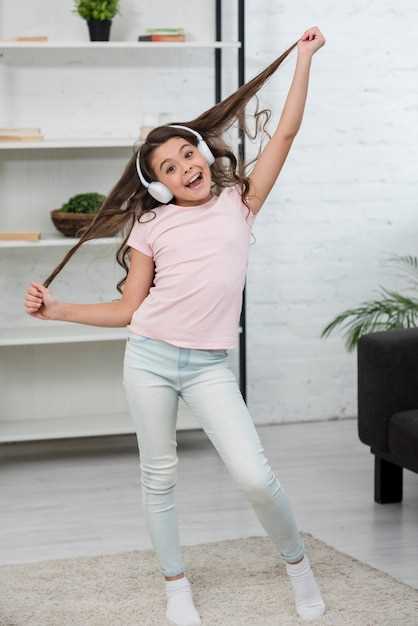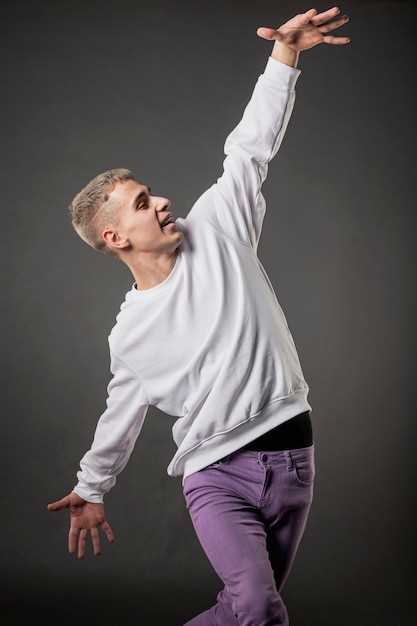Engaging in physical activities plays a crucial role in nurturing imagination, helping children build self-assurance, and enhancing their physical skills. Participating in rhythmic movements not only promotes self-expression but also fosters psychological well-being in young individuals. This article delves into the myriad advantages that dance brings to children’s growth and development.
Creative exploration through movement allows children to showcase their artistic abilities and unique perspectives. It facilitates a sense of freedom and creativity, enabling them to unleash their imagination and originality. Moreover, dancing builds character by instilling confidence and self-esteem in youngsters as they learn to express themselves through body language and movement.
Developing coordination is another essential aspect of dance that benefits children both physically and cognitively. The rhythmic patterns and choreographed sequences in dance routines enhance balance and flexibility, while also improving concentration and focus. By incorporating structured movements into their daily routines, children can refine their motor skills and learn discipline in a fun and engaging way.
The Influence of Movement on Kids’ Development
The participation in physical activities that involve rhythmic movements can have a profound impact on children’s growth. Through engaging in activities that require coordination, creativity, and confidence, kids can enhance their overall well-being and cognitive abilities. By exploring various forms of movement, children can develop a stronger sense of self-expression and spatial awareness, contributing to their physical, emotional, and social development.
Enhancing Creativity Through Movement
Moving creatively can stimulate innovative thinking and original expression in young minds. By engaging in various forms of physical expression, children have the opportunity to explore their imagination and develop unique ways of communicating their ideas.
Expressive Forms of Art

Exploring various artistic activities can have a positive impact on young individuals, helping them develop a range of skills and abilities. Engaging in different forms of artistic expression allows children to unleash their creativity, improve self-esteem, and enhance their motor skills.
- Painting
- Drawing
- Sculpting
- Acting
- Music
- Poetry
Cognitive Skills and Imaginative Play

The engagement in artistic movements can have a profound impact on the mental abilities and creative exploration of young individuals. Through the practice of expressive gestures and playful activities, children can enhance their thinking processes and foster a sense of make-believe scenarios.
Exploring the realms of imaginative play can stimulate the brain’s capacity to problem-solve and think critically in various situations. By engaging in pretend adventures and storytelling, children can develop their cognitive skills and enhance their ability to think outside the box.
Role-playing in dance routines and creating imaginary worlds can also help children develop their memory retention and enhance their concentration levels. This form of creative expression allows them to explore different perspectives and learn how to adapt to changing circumstances.
Moreover, engaging in imaginative play can help children develop their emotional intelligence and empathy towards others. By stepping into different roles and scenarios, they can better understand different viewpoints and enhance their social interactions.
In conclusion, the incorporation of imaginative play into dance activities can greatly benefit children’s cognitive development and spark their creativity in unique ways. By encouraging children to explore their imagination and engage in expressive movements, we can help them develop essential skills for their overall growth and well-being.
Building Confidence and Social Skills
Enhancing self-assurance and interpersonal abilities are key aspects of engaging in physical movement and rhythmic expression. As young individuals partake in active dance sessions, they have the opportunity to develop a strong sense of belief in themselves and establish connections with others.
Cultivating self-assurance is crucial for children as they navigate various challenges and triumphs in their everyday lives. Through dance experiences, youngsters can build a solid foundation of inner strength and belief in their abilities to overcome obstacles and achieve success.
Improving social skills is another valuable outcome of participating in dance activities. By interacting with peers, instructors, and audiences, children learn how to communicate effectively, collaborate with others, and develop empathy and understanding.
Overcoming Stage Fright

Conquering the fear of performing in front of others is an important aspect of engaging in artistic activities. This section explores strategies for managing the anxiety that comes with being on stage and offers tips for boosting confidence and enjoyment while dancing.
One key technique for overcoming stage fright is to practice mindfulness and focus on the present moment. By tuning into your body and emotions, you can better control nerves and stay grounded during performances. Additionally, visualizing success and positive outcomes can help alleviate fears and build self-assurance.
Another helpful tip is to maintain a positive attitude and remind yourself of your love for dance. Embracing mistakes as learning opportunities rather than failures can shift your mindset and reduce performance anxiety. Surrounding yourself with supportive peers and instructors can also provide encouragement and a sense of community.
Ultimately, facing and working through stage fright can lead to personal growth, increased self-esteem, and a deeper connection to the art of dance. By implementing these strategies and staying committed to your craft, you can overcome your fears and fully enjoy the benefits of expressing yourself through movement.
Collaborative Experiences and Teamwork

In the realm of cooperative interactions and working together, young individuals engage in joint efforts that foster camaraderie, communication, and mutual support. Through shared experiences, children learn to navigate group dynamics, develop empathy, and contribute to the collective success of a team.
- Participating in group dance routines encourages children to synchronize movements, maintain rhythm, and cooperate with their peers in achieving a harmonious performance.
- Collaborative activities in dance classes promote unity, respect, and a sense of belonging among participants, fostering a supportive environment where individuals can thrive and grow together.
- Teamwork in dance not only enhances physical coordination and flexibility but also cultivates essential social skills such as leadership, compromise, and problem-solving, preparing children for future collaborative endeavors in various aspects of life.
Video:
Dance and Academic Success: How Dance Enhances Your Child’s School Performance
Dance and Academic Success: How Dance Enhances Your Child’s School Performance by JRD Dance Media 47 views 11 months ago 3 minutes, 12 seconds
Q&A:
How can dance help boost children’s creativity?
Dance allows children to express themselves in a creative manner, exploring different movements, rhythms, and emotions. This can help them think outside the box, come up with new ideas, and problem-solve in unique ways.
What specific benefits does dance provide for children’s confidence?
Dance helps children build confidence by giving them a platform to showcase their abilities and talents. When they see their progress and improvement, it boosts their self-esteem and helps them feel more self-assured in other areas of their life.
How does dance contribute to children’s coordination skills?
Dance requires children to coordinate their movements to the rhythm of the music, helping them develop better balance, agility, and spatial awareness. This can improve their overall coordination skills and enhance their physical abilities.
Can dance be beneficial for children with learning disabilities?
Yes, dance can be very beneficial for children with learning disabilities. It provides a non-verbal form of communication, helps improve their coordination and motor skills, and can boost their self-esteem and confidence.
Are there any social benefits to children participating in dance?
Absolutely! Dance encourages teamwork, communication, and collaboration among children. It also helps them develop social skills such as empathy, respect, and the ability to work with others towards a common goal.
Why is dance beneficial for children’s development?
Dance helps boost creativity, confidence, and coordination in children. It allows them to express themselves creatively, builds their self-esteem, and improves their physical coordination.
How can parents encourage their children to participate in dance?
Parents can encourage their children to participate in dance by exposing them to different styles of dance, enrolling them in dance classes, attending performances together, and being supportive of their interests and progress in dance.